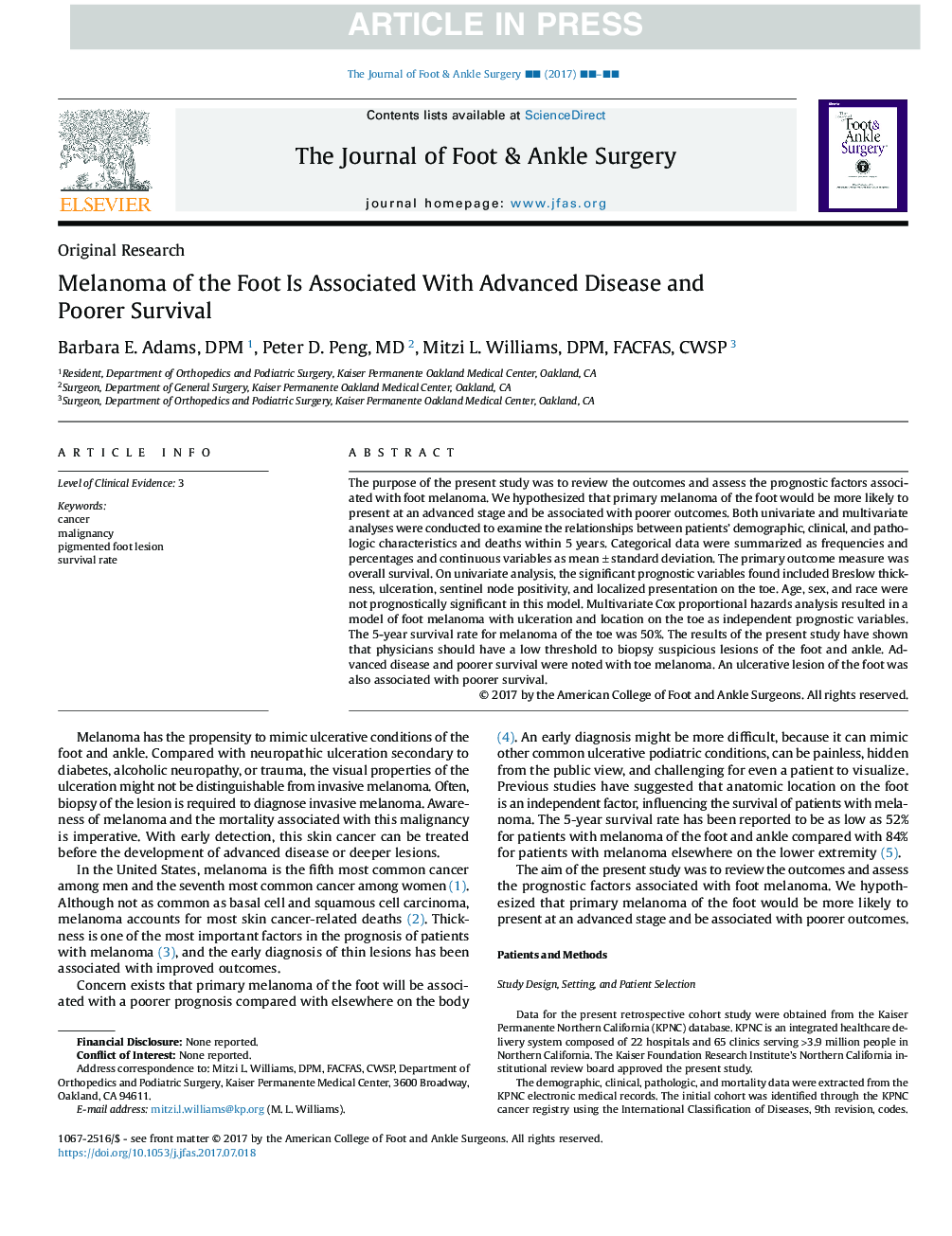| Article ID | Journal | Published Year | Pages | File Type |
|---|---|---|---|---|
| 8603337 | The Journal of Foot and Ankle Surgery | 2018 | 4 Pages |
Abstract
The purpose of the present study was to review the outcomes and assess the prognostic factors associated with foot melanoma. We hypothesized that primary melanoma of the foot would be more likely to present at an advanced stage and be associated with poorer outcomes. Both univariate and multivariate analyses were conducted to examine the relationships between patients' demographic, clinical, and pathologic characteristics and deaths within 5 years. Categorical data were summarized as frequencies and percentages and continuous variables as mean ± standard deviation. The primary outcome measure was overall survival. On univariate analysis, the significant prognostic variables found included Breslow thickness, ulceration, sentinel node positivity, and localized presentation on the toe. Age, sex, and race were not prognostically significant in this model. Multivariate Cox proportional hazards analysis resulted in a model of foot melanoma with ulceration and location on the toe as independent prognostic variables. The 5-year survival rate for melanoma of the toe was 50%. The results of the present study have shown that physicians should have a low threshold to biopsy suspicious lesions of the foot and ankle. Advanced disease and poorer survival were noted with toe melanoma. An ulcerative lesion of the foot was also associated with poorer survival.
Keywords
Related Topics
Health Sciences
Medicine and Dentistry
Orthopedics, Sports Medicine and Rehabilitation
Authors
Barbara E. DPM, AACFAS, Peter D. MD, Mitzi L. DPM, FACFAS, CWSP,
